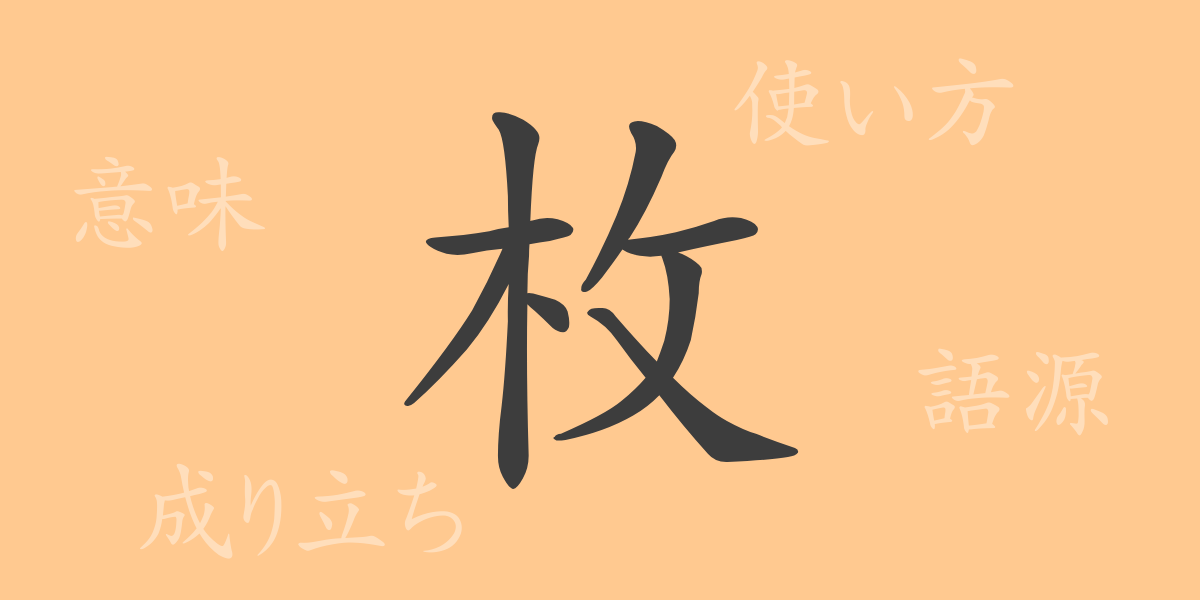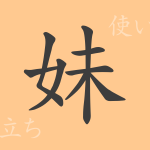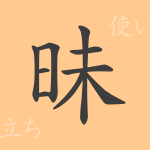There is a Kanji (Chinese character) that we frequently use unconsciously in our daily lives. One such character is “枚 (mai).” In this article, we will delve deep into the origins and modern usage of “枚 (mai),” a commonly used Kanji in Japan, and explore its charm. Let’s uncover the world of “枚 (mai)” while appreciating the profoundness of the Japanese language.
The Origin of 枚 (mai)
“枚 (mai)” is a Kanji that has been used since ancient times, and its shape represents a thin board or sheet. The etymology of “枚 (mai)” comes from depicting the appearance of thinly shaved wooden boards stacked together, which later became a unit for counting. In ancient China, it was common to convey information by writing characters on wooden boards, and “枚 (mai)” was born as a word referring to each of these individual boards.
The Meaning and Usage of 枚 (mai)
“枚 (mai)” is primarily used as a counter for thin and flat objects. Typical examples include paper, cloth, and plates, such as “3枚の切手 (3 mai no kitte)” meaning “3 stamps” or “2枚のシャツ (2 mai no shatsu)” meaning “2 shirts.” It is also used to count abstract concepts, allowing expressions like “何枚もの笑顔 (nan mai mo no egao)” meaning “countless smiles.” The use of such counters is abundant in the Japanese language, and “枚 (mai)” plays a significant role among them.
The Reading, Stroke Count, and Radical of 枚 (mai)
Having a basic understanding of “枚 (mai)” as a Kanji in Japanese is essential.
- Reading: The On’yomi (Chinese reading) is “マイ (mai),” and the Kun’yomi (Japanese reading) is “えだ (eda).”
- Stroke Count: “枚 (mai)” has 8 strokes.
- Radical: The radical is 木偏 (kihen), meaning “wood.”
Idioms, Proverbs, and Expressions Using 枚 (mai)
Numerous idioms, proverbs, and expressions in Japanese include “枚 (mai).” For example, “一枚上手 (ichimai uwate)” means having a cleverness or ability that is not easily bested by others, and “一枚岩 (ichimaiiwa)” represents unity without division. “枚挙に暇がない (maikyo ni itoma ga nai)” is an expression indicating that something is too numerous to count, showcasing the richness of Japanese expressions.
Conclusion About 枚 (mai)
Through this article, we hope you have understood that “枚 (mai)” holds a significant role beyond being a mere counter. It is used to count various objects and concepts in Japanese and reflects Japanese culture and thought through idioms and expressions. Although “枚 (mai)” may seem like a simple Kanji at first glance, it carries a deep history and rich meanings. Next time you use “枚 (mai)” in daily conversation, remember its background.

























